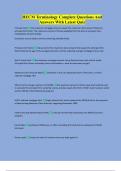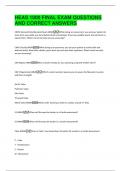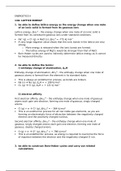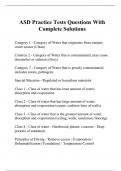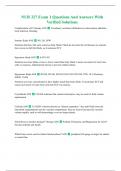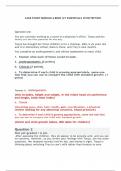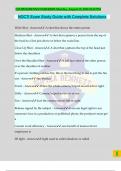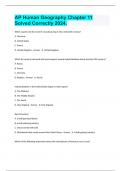Table of Contents
WEEK 1 ....................................................................................................................................................... 2
RED BULL “GIVES YOU WINGS” FOR BETTER OR WORSE: A DOUBLE‐EDGED IMPACT OF BRAND EXPOSURE
ON CONSUMER PERFORMANCE - BRASEL & GIPS............................................................................................ 2
THE IMPACT OF INCOMPLETE TYPEFACE LOGOS ON PERCEPTIONS OF THE FIRM - HAGTVEDT ................... 2
SURPRISE, SURPRISE. AMBIENT MEDIA AS PROMOTION TOOL FOR RETAILERS – HUTTER & HOFFMANN ... 3
AUTOMATIC EFFECTS OF BRAND EXPOSURE ON MOTIVATED BEHAVIOR: HOW APPLE MAKES YOU “THINK
DIFFERENT” – FITZSIMONS, CHARTRAND & FITZSIMONS .............................................................................. 4
WEEK 2 ....................................................................................................................................................... 6
HOW CONSUMERS ARE AFFECTED BY THE FRAMING OF ATTRIBUTE INFORMATION BEFORE AND AFTER
CONSUMING THE PRODUCT- LEVIN & GAETH ................................................................................................. 6
EFFECTS OF DISCOUNT FRAMING IN COMPARATIVE PRICE ADVERTISING – MCKECHNIE, DEVLIN, ENNEW
& SMITH ........................................................................................................................................................... 6
ZERO AS A SPECIAL PRICE: THE TRUE VALUE OF FREE PRODUCTS – SHAMPANIER, MAZAR & ARIELY ....... 8
WEEK 3 ..................................................................................................................................................... 11
WHERE CONSUMERS DIVERGE FROM OTHERS: IDENTITY SIGNALING AND PRODUCT DOMAINS – BERGER &
HEATH ............................................................................................................................................................ 11
A TIGER AND A PRESIDENT: IMPERCEPTIBLE CELEBRITY FACIAL CUES INFLUENCE TRUST AND
PREFERENCE - TANNER & MAENG ................................................................................................................ 13
SIGNALING STATUS WITH LUXURY GOODS: THE ROLE OF BRAND PROMINENCE – HAN, NUNES & DRÈZE . 15
WEEK 4 ..................................................................................................................................................... 18
BICULTURAL SELF-DENSE IN CONSUMER CONTEXTS: SELF-PROTECTION MOTIVES ARE THE BASIS FOR
CONTRAST VERSUS ASSIMILATION TO CULTURAL CUES – MOK & MORRIS ................................................. 18
SEX IN ADVERTISING: GENDER DIFFERENCES AND THE ROLE OF RELATIONSHIP COMMITMENT – DAHL,
SENGUPTA & VOHS ........................................................................................................................................ 19
INCREASING SAVING BEHAVIOR THROUGH AGE-PROGRESSED RENDERINGS OF THE FUTURE SELF –
HERSHFIELD ET AL. ........................................................................................................................................ 21
WEEK 5 ..................................................................................................................................................... 22
POSITIVE AND NEGATIVE MEDIA IMAGE EFFECT ON THE SELF – SMEESTERS & MANDEL .......................... 22
THE POWER OF TV: CABLE TELEVISION AND WOMEN’S STATUS IN INDIA – JENSEN & OSTER................... 23
GUILT VERSUS SHAME: COPING, FLUENCY AND FRAMING IN THE EFFECTIVENESS OF RESPONSIBLE
DRINKING MESSAGES – DUHACKEK, AGRAWAL & HAN ............................................................................... 24
WEEK 6 ..................................................................................................................................................... 25
THE EFFECT OF NOVEL ATTRIBUTED ON PRODUCT EVALUATION – MUKHERJEE & HOYER ....................... 25
NETWORKS OF DESIRE: HOW TECHNOLOGY INCREASES OUR PASSION TO CONSUME - KOZINETS,
PATTERSON & ASHMAN. ................................................................................................................................ 26
GAMIFIED INFORMATION PRESENTATION AND CONSUMER ADAPTATION OF PRODUCT INNOVATIONS –
MÜLLER-STEWENS, SCHLAGER, HÄUBL & HERRMANN .............................................................................. 29
1
,Week 1
Red Bull “Gives You Wings” for better or worse: A double‐edged impact of brand
exposure on consumer performance - Brasel & Gips
The brand exposure for Red Bull had a double-edged effect, where Red-Bull’s brand identity
could create both positive and negative pressures on consumer performance. Positive effect is
faster driving, negative effect is higher car contact. In the virtual media setting, brand identity
impacted the objective metric of race time through a highly abstract path, as neither the
player nor their in-game avatar was consuming the product.
Brand identity plays a large role in priming judgments of product quality and enjoyment of
the consumption process. Brand placebo effect = where the brand primes conveyed brand
identity-consistent benefits to consumers even if the actual product consumed was not the
branded product.
Brand exposure can serve as an environmental cue that triggers nonconscious behavioral
processes, which lead to various behavioral outcomes. The mere presence of the brand could
activate brand identity-consistent traits and concepts, which exert pressure on behavior.
Placing brands onto objects under consumer control could transfer the cultural values and
affect to the consumer, even if the brand itself is not being used or consumed in a traditional
sense. As the branded object becomes a temporary possession and part of the consumer’s
extended self, consumer performance may be affected by the transformative experience of the
brand’s advertising.
Results
Brand priming and exposure can have a double-edged effect on consumer performance
metrics. Consumers racing a car with a Red Bull paint job performed either considerably
faster or slower than they did in other branded cars. Red bull’s personality associations of
speed, power, aggressiveness and recklessness either pushed consumers to the edge of their
ability, leading to very fast racing overall, or pushed them beyond their ability, leading to
higher off-track times and slower races overall. Red Bull was the only brand with a
significantly uneven race speed distribution, showing a strong U-shaped effect on the race
time.
The results suggest that brand placement can affect consumer performance beyond traditional
marketing metrics and highlights the need for increased work on brand exposure as brand
placement replaces traditional advertising in marketing campaigns.
The impact of incomplete typeface logos on perceptions of the firm - Hagtvedt
The deliberate incompleteness in logos creates a form of perceptual ambiguity. The current
research proposes one potential goal that may be achieved through the perceptual ambiguity
of incomplete typeface logos, namely, the positioning of the firm as innovative in consumers’
eyes. This is because the incomplete logo is perceived as interesting and creative, and this
perception spills over onto the firm.
A potential drawback is that the incompleteness conveys a lack of clarity, leading to
diminished perceptions of trustworthiness.
If the marketing information provided is ambiguous or uninformative, consumers attempt to
fill in the blanks by searching for an explanation. This search in itself leads to favorable
perceptions of the product.
2
,Results
Incomplete typeface logos resulted in perceptions of the firms that were higher in terms of
innovativeness and lower in terms of trustworthiness.
There were no differences in affect, and the results were identical when controlling for affect.
Surprise, surprise. Ambient media as promotion tool for retailers – Hutter & Hoffmann
This study explored the effect of unconventional ambient media. Ambient media explicitly
intent to surprise consumers by placing advertisements at unusual locations in the direct
social environment of the target group, where consumers do not expect them.
The definition of ambient media = the placement of advertising in unusual and unexpected
places (locations) often with unconventional methods (execution) and being first or only ad
execution to do so (temporal).
Research indicated that this nontraditional out-of-home media is able to raise attention
because it surprises consumer by confronting them with incongruous stimuli against a
familiar environment.
The ambient media’s surprise effect differs from the one of traditional ads containing
surprising elements due to the following:
- Attention.
o Attention is particularly relevant in real-life settings, because advertising
messages can only lead to positive attitudes or increasing sales figures if the
consumer focuses toward the ad. Ambient media have the power to draw and
hold the attention of passerby towards the ad by unexpected media design and
placement, while traditional ad evokes surprise only within the ad content.
o Ambient media can direct attention whereas traditional surprise ads can only
intensify processing.
- Cognitive processes
o The cognitive processing evoked by surprise differs between ambient media
and traditional media. Receivers of traditional ads only have to resolve
incongruent elements of the ad content, while receivers of surprising ambient
media have to disentangle the unexpected effect of ad design and placement
and find explanations how it fits to the ad message.
Surprise results if a stimulus does not conform to expectations. Surprise results from schema
discrepancy. A schema is a private, informal, inarticulate, unreflective theory about the
nature of objects, events or situations. Although surprise is neutral by definition, the receiver
might categorize the surprising stimulus as pleasant or unpleasant. Neutral emotion of
surprise is often mixed with other emotions that color it either positively or negatively.
Attention is the process of actively selecting and interpreting external stimuli in one’s
ongoing activity. Schema-discrepant stimuli attract attention, because individuals need more
cognitive effort to match these stimuli with known ones. Consumers who encounter
unconventional ambient media interrupt their ongoing activity and engage in cognitive
elaboration.
Results
This paper demonstrates that ambient media are able to raise consumer attention and to
intensify information processing in order to resolve incongruence, which leads to a positive
Attitude towards the Ad (Aad) and downstream variables. Surprising ambient media are
3
, indeed able to attract attention n and that participants focus on surprising ambient media
more intensely.
Automatic effects of brand exposure on motivated behavior: How Apple makes you
“think different” – Fitzsimons, Chartrand & Fitzsimons
Priming, or situational activation of mental constructs, demonstrates that environmental cues,
even subtly presented, can have powerful effects on behavior. Primes are often presented
subliminally, showing that such effect van result even when participants are unaware of the
primes themselves.
The most prominent account of behavioral priming effects has emphasized the role of
Activated cognitive constructs à constructs associated with the primed representation guide
behavior through a direct perception-behavior link, which people’s behavior mirrors a
perceived construct.
Recent research has emphasized the role of activated motivational constructs in producing
these effects. Because goals are theorized to be represented mentally as are other cognitive
constructs. Research has suggested that activated goals cause goal means (= ways to achieve
the goal) to become more accessible. That is, when a goal becomes active, means to achieve
that goal also become active, which then go on to shape behavior.
Arguments for brands as behavioral primes
- Consumers perceive brands as being linked to human characteristics. Brands may
shape behavior via cognitively based processes such as the perception-behavior link
= cognitive-based priming effect
- Brands may elicit goal-based priming effect, whose activation is thought to last over
time (in comparison to cognitive-based effects) and thus have the potential for greater
impact. Goals and motives are essential parts of both social and consumer behavior
and are known to play an important role in brand-behavior relationships. Much of the
psychological value consumers obtain from brands appears to come from brands’
ability to fulfill their personality and identify motivations.
à Via associations with desired human qualities, goal-relevant brands may acquire
the ability to trigger these ideal-self goals and shape behavior
Arguments against brands as behavior primes
- Researchers have failed to find some basic social perception effects when dealing
with objects such as brands. these failures to replicate likely reflect differences
between person- and brand representations in memory, which may affect the ability of
brands to automatically prime behavior. One such difference lies in the behavioral-
response components of these representations: brand representations are likely to be
far less practiced and well established than those of social schemas for several
reasons.
Goal-based priming effects follow additional principles that distinguish them from non-goal-
baes effects. Goal-directed behavior is known to “look” different than other kinds of
behavior, it increases following a delay, persists through obstacles and decreases when the
goal is satisfied.
- Goals are thought to shape behavior only when the individual perceives a discrepancy
between his or her current and desired end states
- For a prime to elicit goal-directed action, the end state must be associated with
positive affect; end states that are negatively perceived by the individual will not
motivate approach behavior.
4



